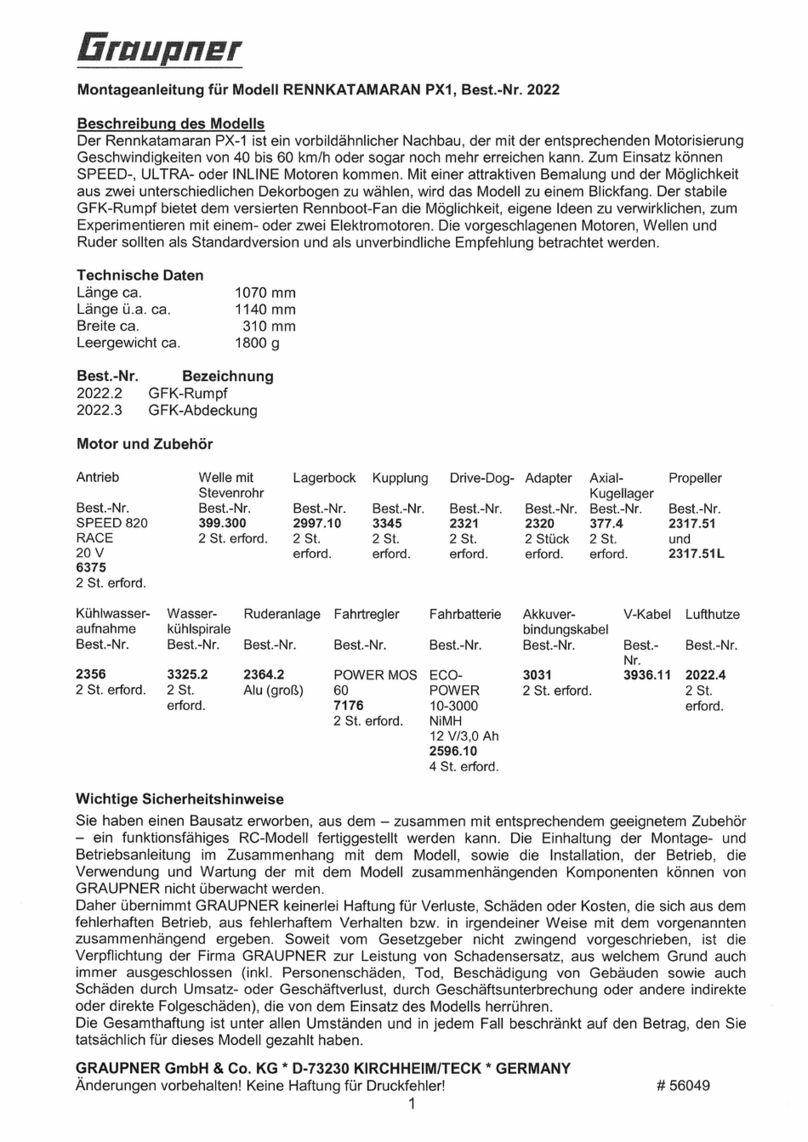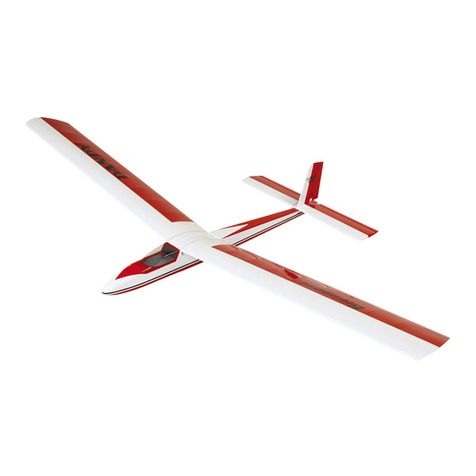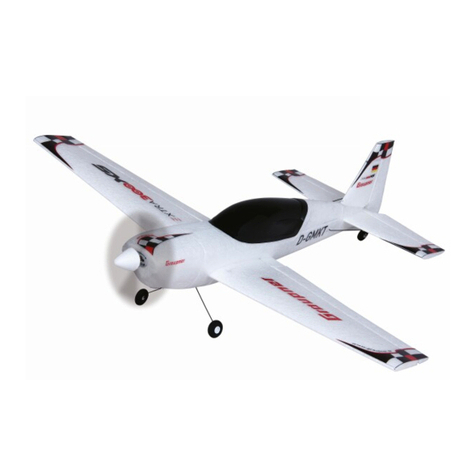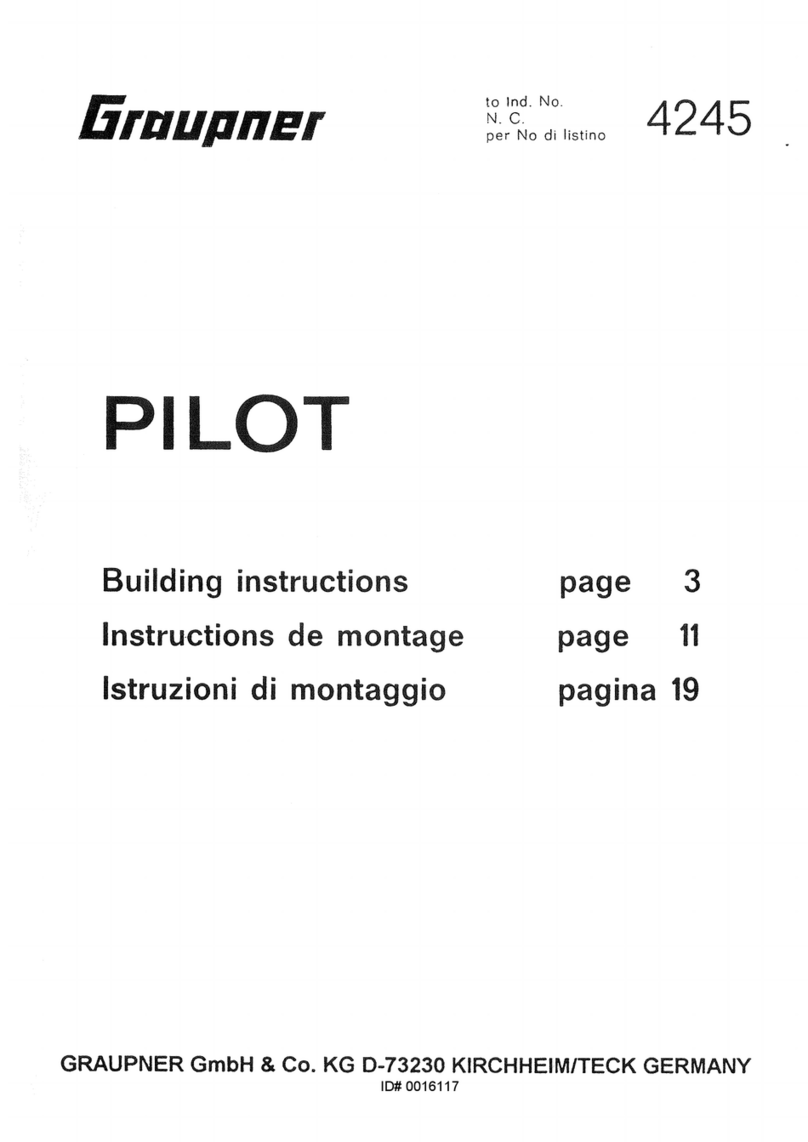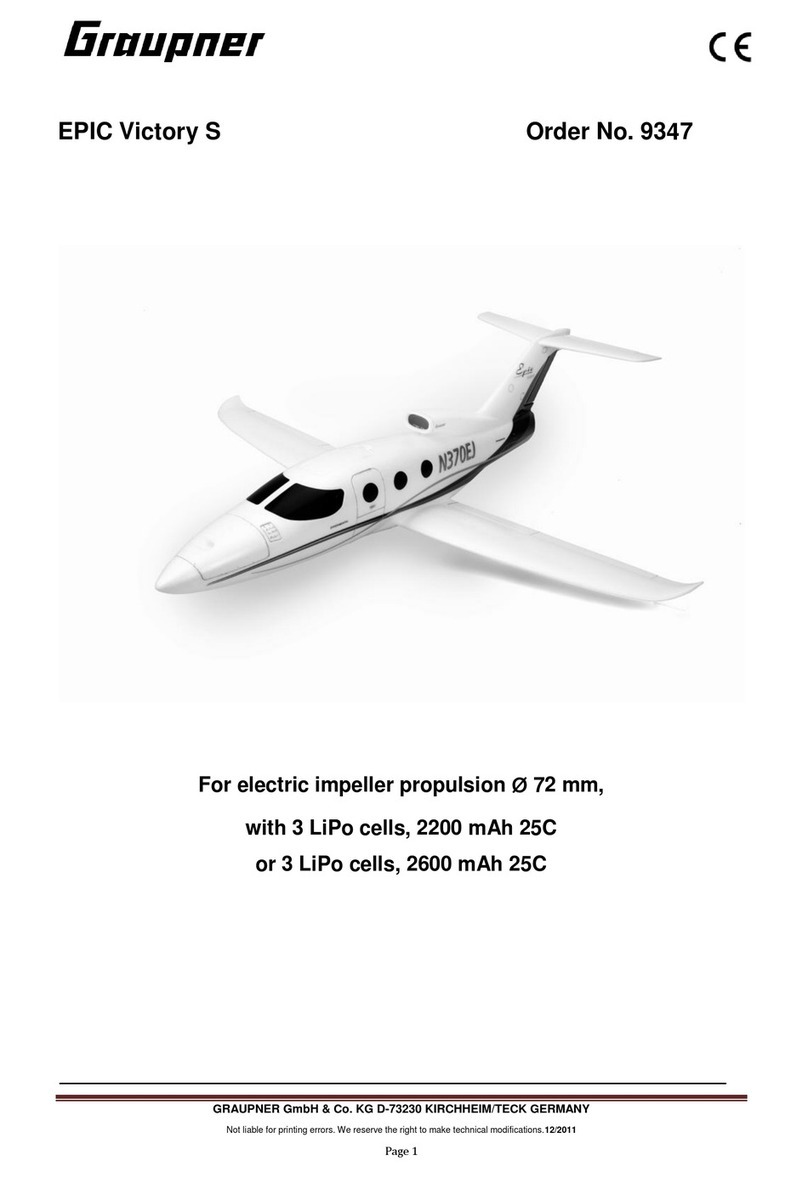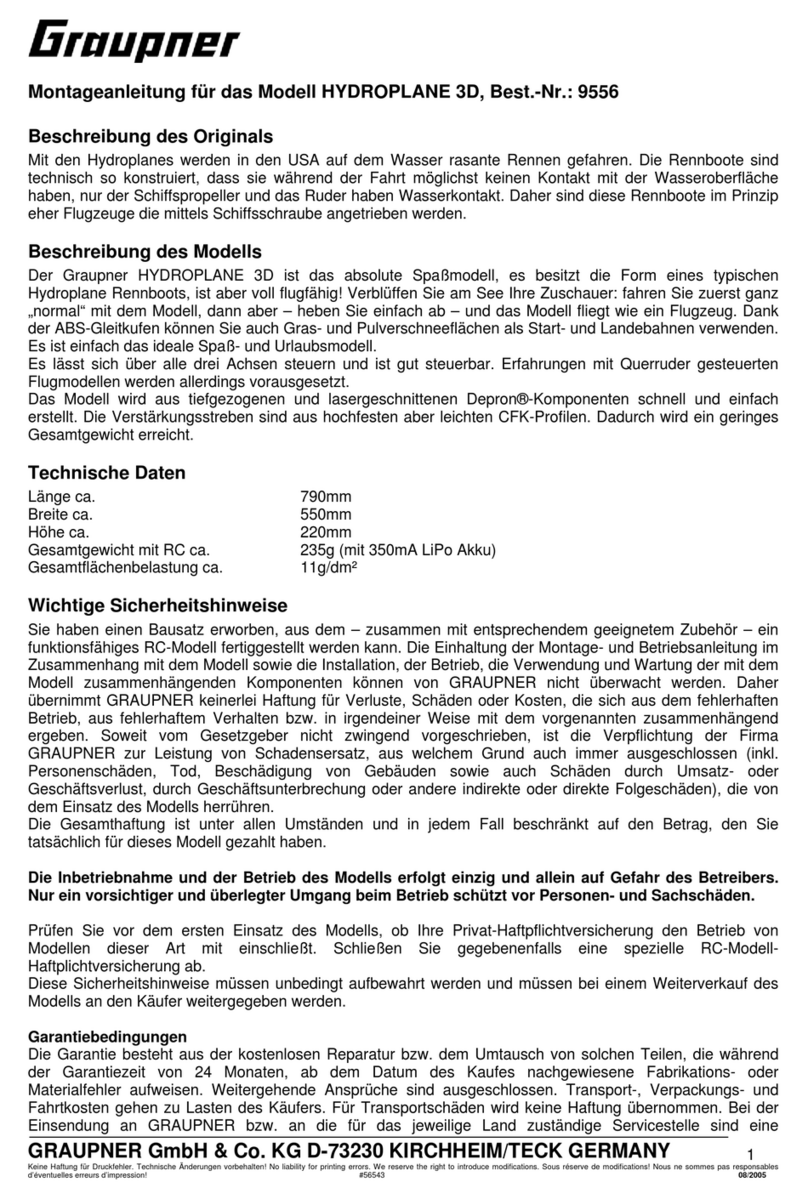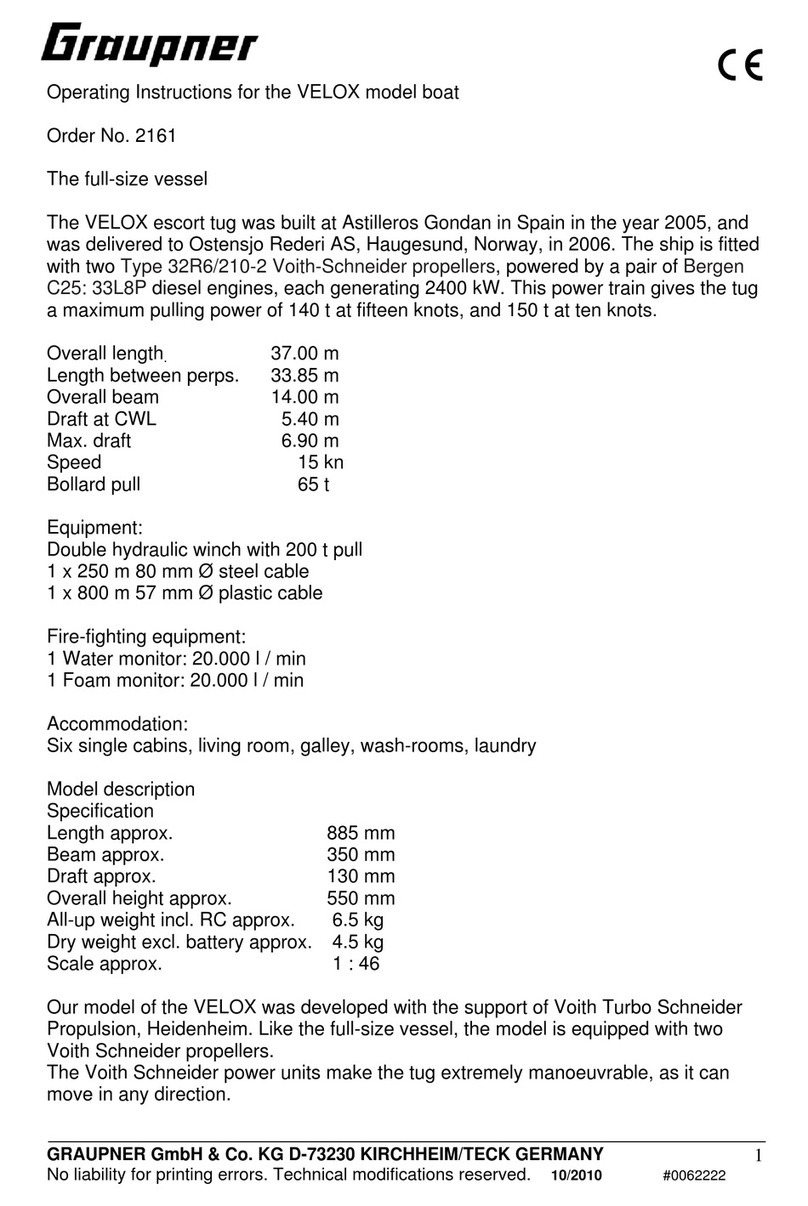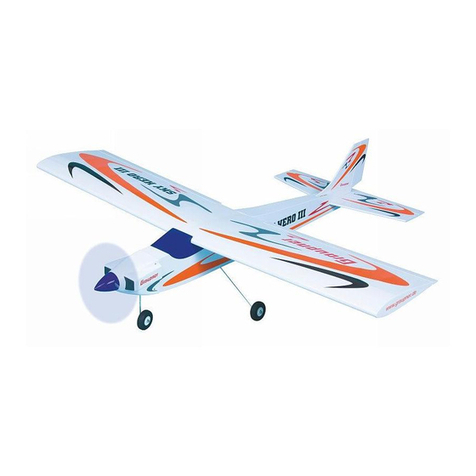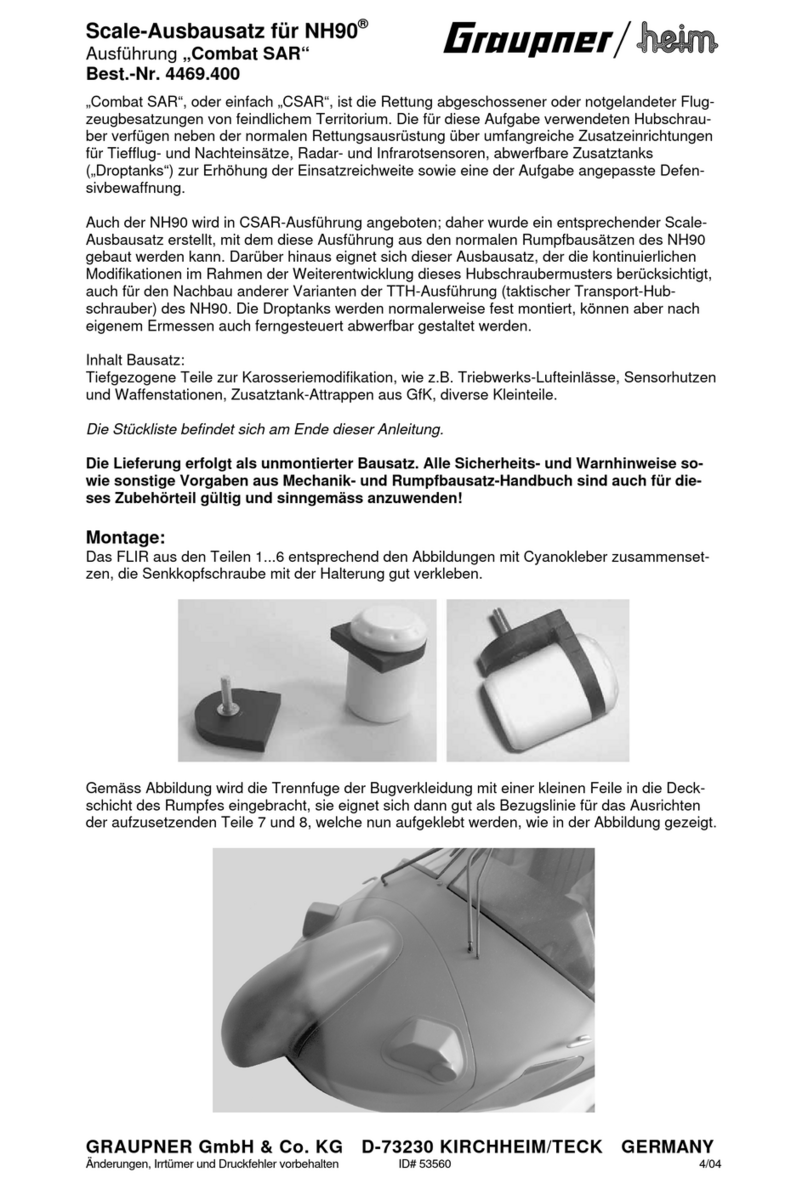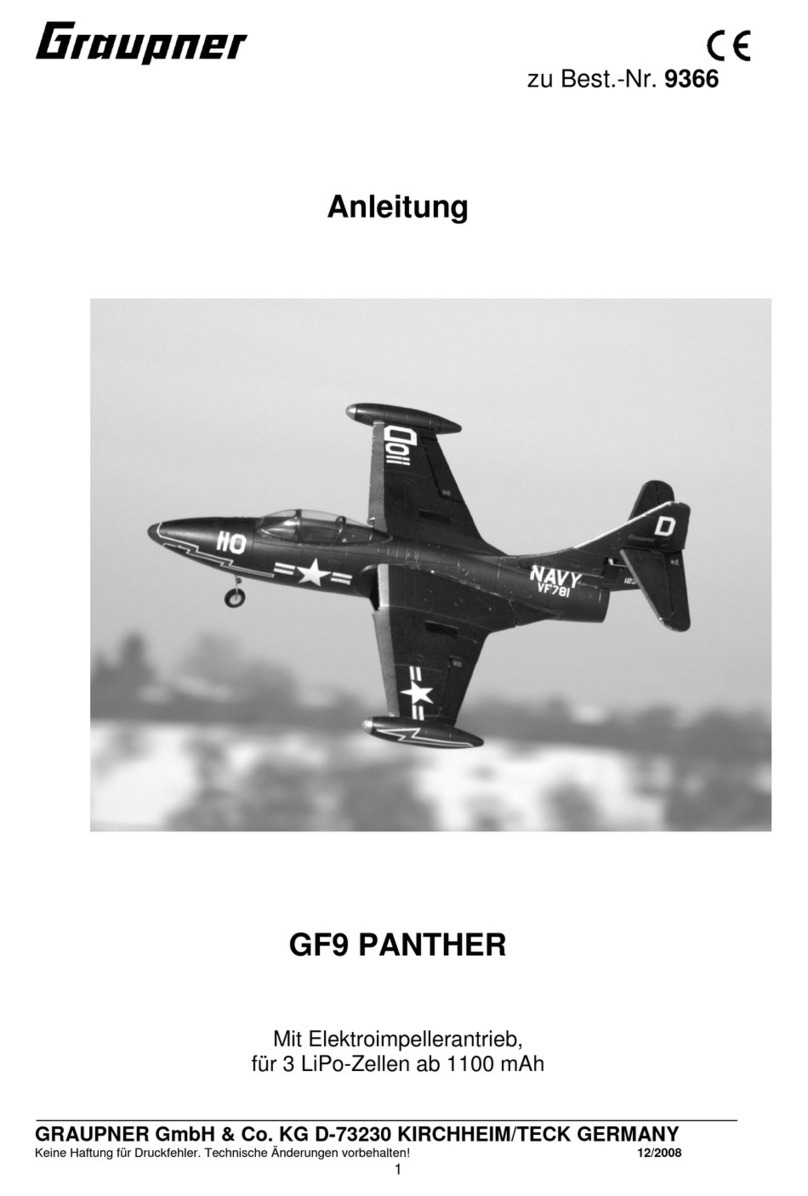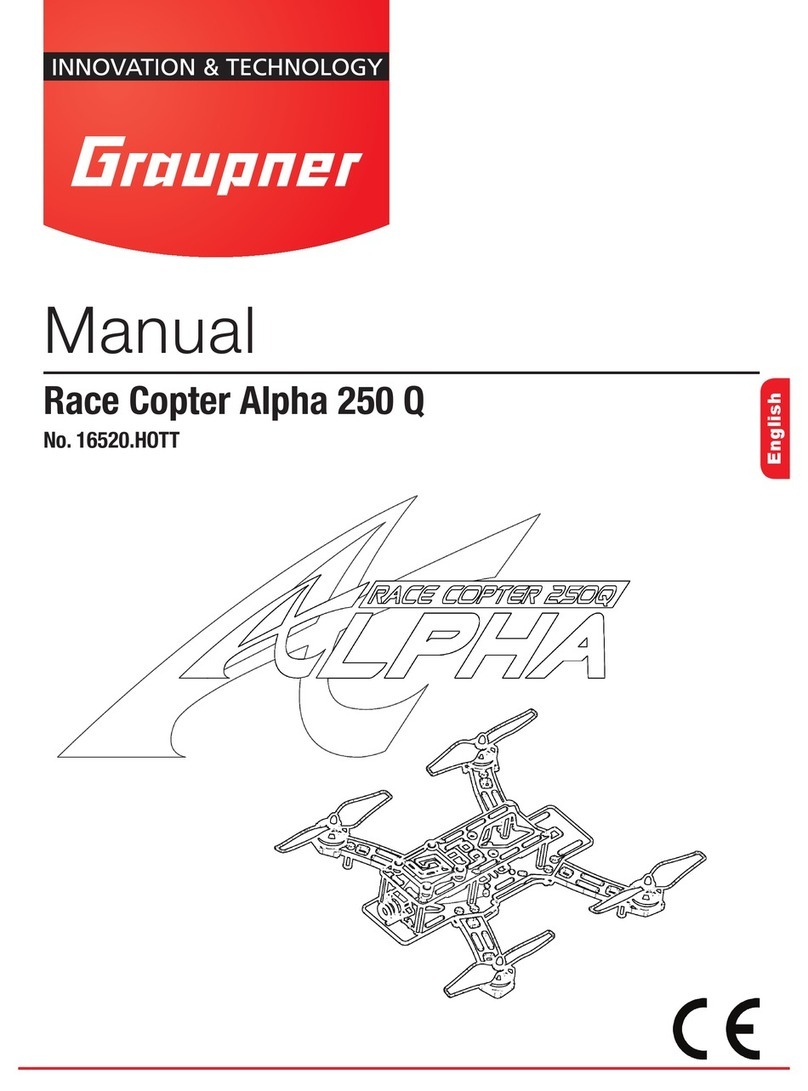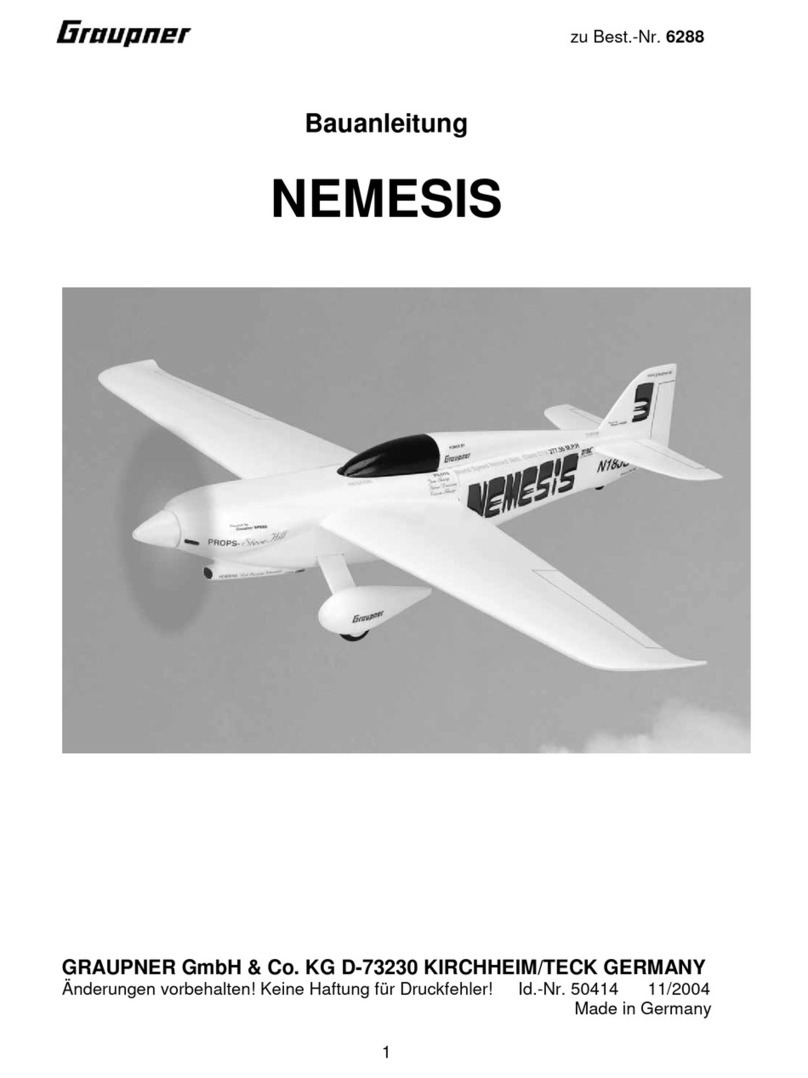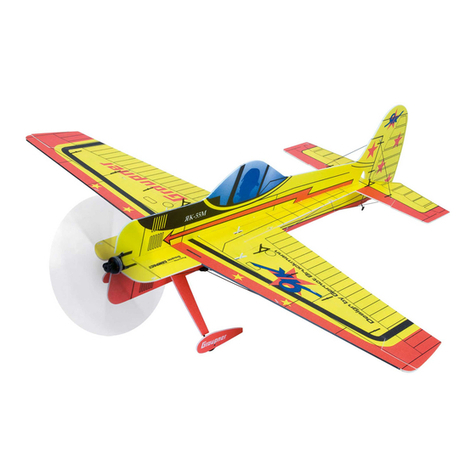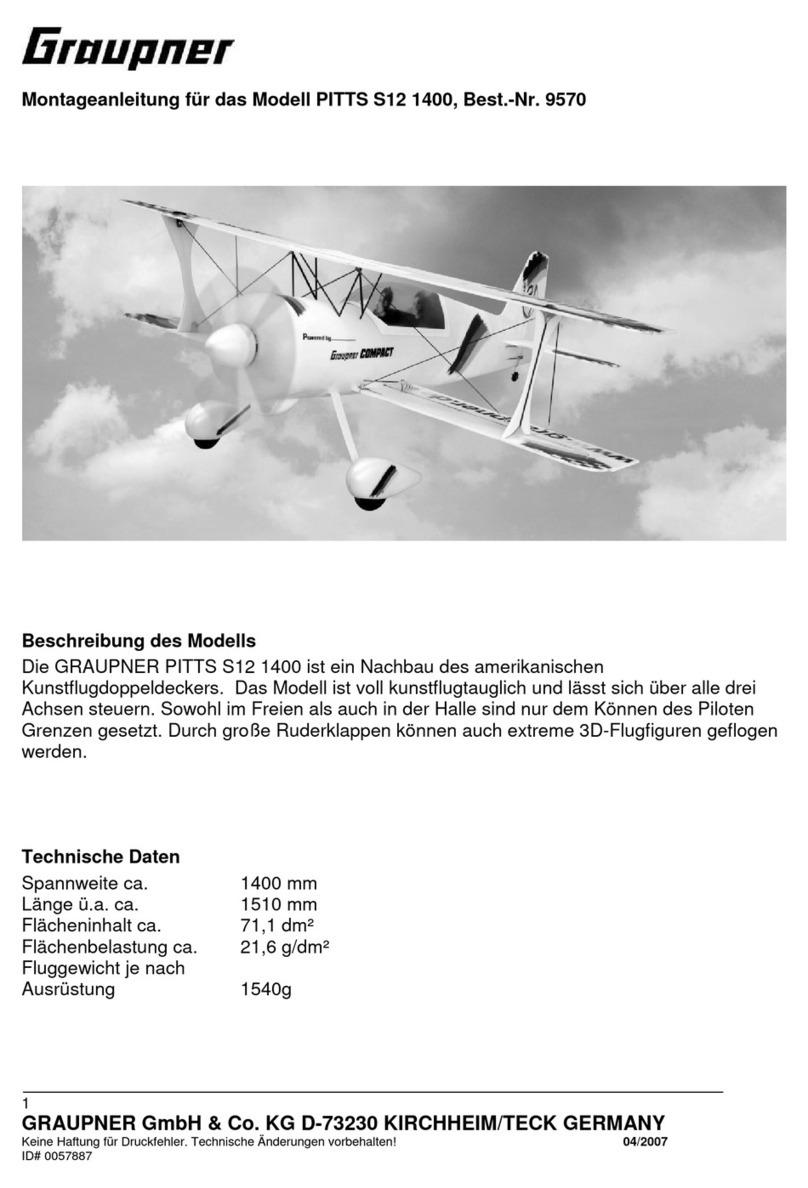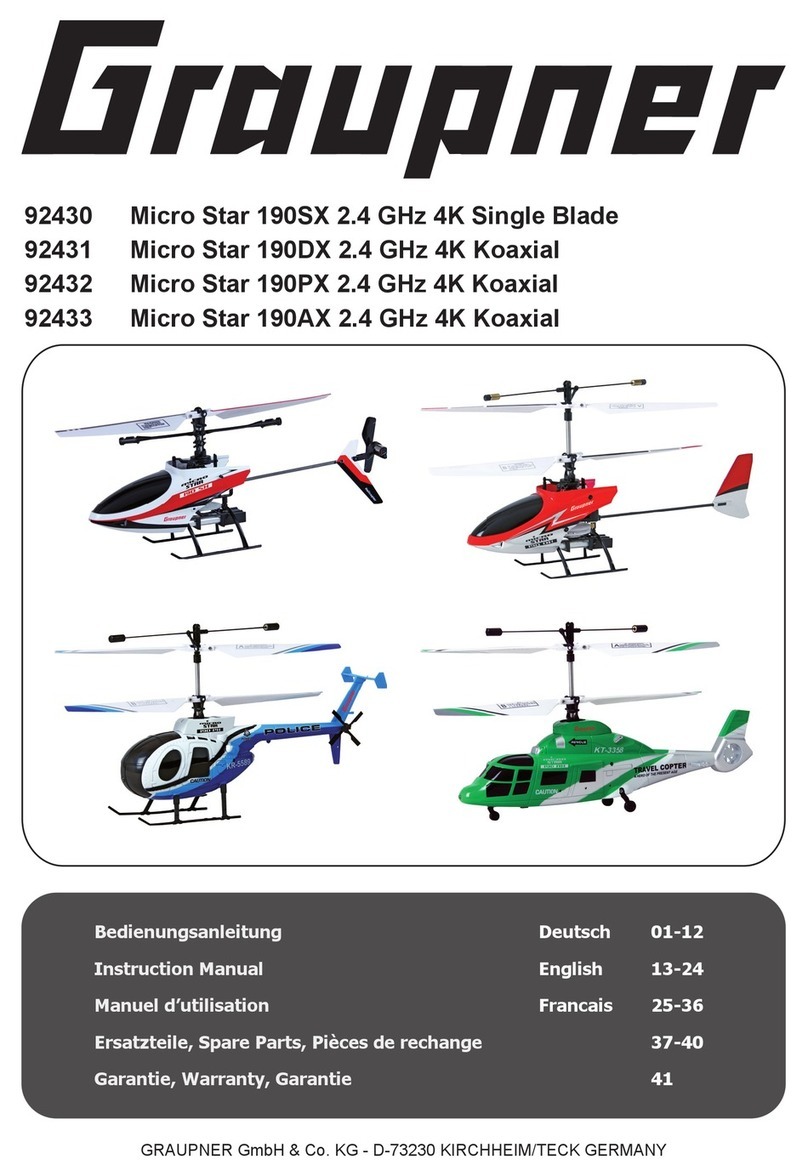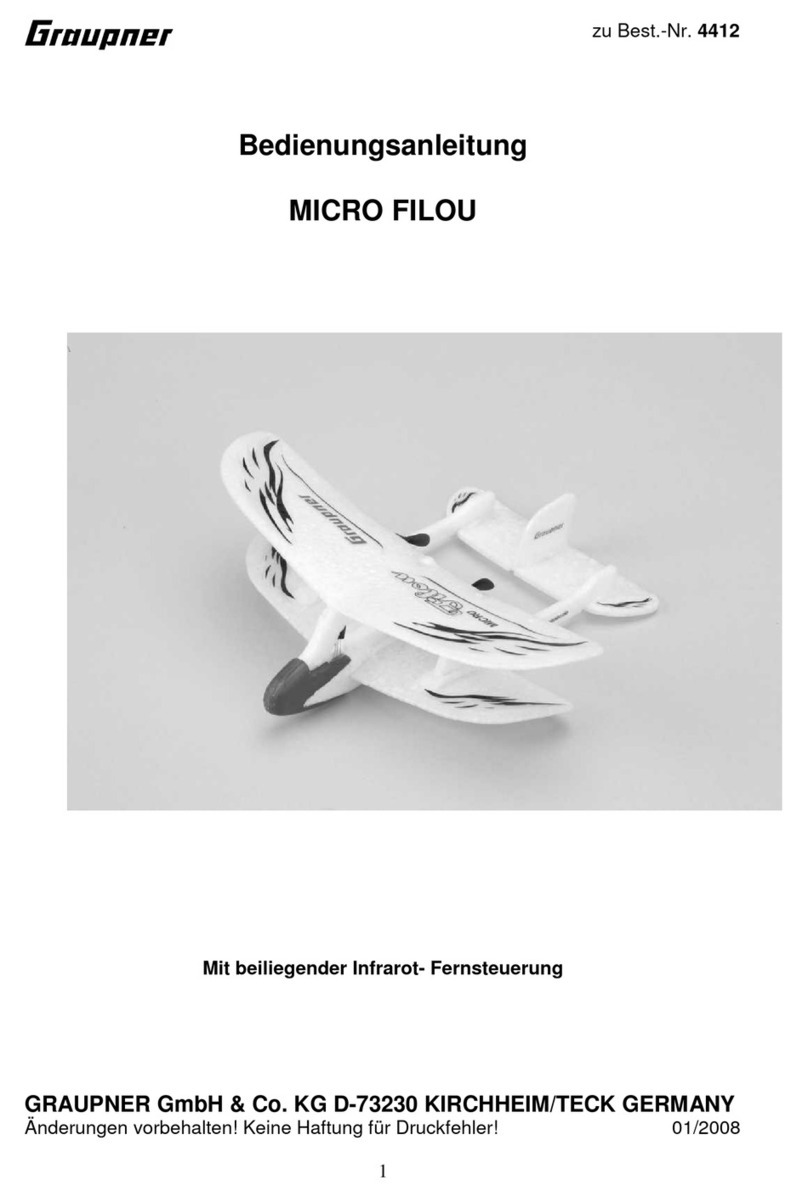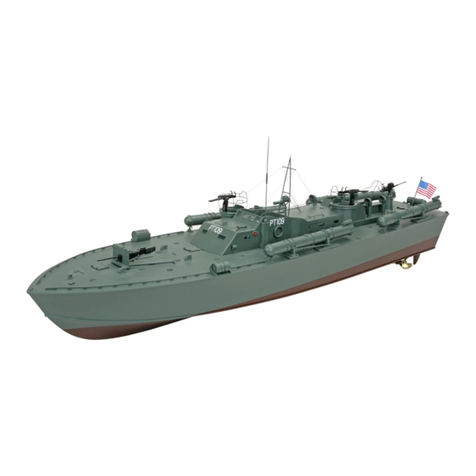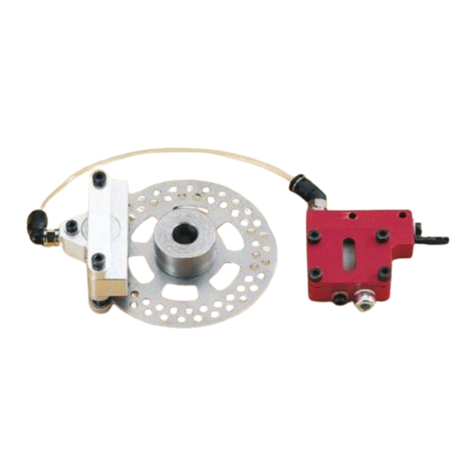
GRAUPNER GmbH & Co. KG D-73230 KIRCHHEIM/TECK GERMANY
Keine Haftung für Druckfehler. Technische Änderungen vorbehalten! 11/2010 9
•If you use a charger powered by your car battery, be sure to recharge the battery outside the car.
•Ensure that the rudder servo is not obstructed mechanically at any point in its arc of movement.
•Dry cells and rechargeable batteries must never be short-circuited. Do not allow them to come into di-
rect contact with water.
•Allow the motor and speed controller to cool off after each run. Do not touch the hot parts.
•Do not subject the model to severe humidity, heat, cold, vibration or dirt.
•Remove the drive battery and any dry cells before storing the model. Store all batteries in such a way
that short-circuits are impossible.
•The drive battery must always be removed from the boat before it is transported.
•Secure the model, batteries and RC equipment carefully when transporting them. They may be seri-
ously damaged if they are free to slide about.
•Ensure that the tin-plated connector contacts between the speed controller and the drive motor are ef-
fectively insulated. They must never be allowed to make electrical contact with each other.
•When you notice that the boat’s top speed is diminishing, this is your indication that the drive battery is
almost flat. When this happens, run the boat directly back to the bank, and cease operations. The bat-
tery must be recharged before you run the model again.
•If you intend to operate the model on moving water (e.g. a river): remember that it could be washed
away downstream if a malfunction occurs or the battery is depleted.
•If you have to salvage the model, take care not to risk your own life or that of others.
•Check regularly that the boat is completely watertight, as it may sink if too much water enters the hull.
Check the boat for damage before every run, and ensure that water cannot penetrate the hull through
the shaft or rudder openings.
•We will not entertain guarantee claims for damage caused by damp or water!
Care and maintenance
•Clean the model carefully after every run, and immediately use a piece of paper towel or similar to re-
move any water which has penetrated the hull. Leave the cockpit cover open as long as you can, so
that any lingering damp can dissipate.
•Clean the model and RC components using suitable cleaning agents only. Ask your model shop for
information if you are not sure what to use.
•Lubricate the drive shaft at the end of each session; your model shop will provide advice about suitable
non-contaminating lubricants. A good lubricant is our high-performance grease, Order No. 570.
•If you do not intend to operate the boat for a long period, all moving parts (propeller shaft, etc.) must be
dismantled, cleaned and re-lubricated before running the model again.
•All rechargeable and dry batteries should also be removed from the model and the transmitter, and
stored separately.
Important safety information and operating notes regarding the RC system
•Before each run: always switch the transmitter on first, and only then the receiver (model).
•After each run: always switch the receiver off first, and only then the transmitter.
•Protect all RC system components from dust, dirt, damp, vibration and foreign bodies. Never subject the
equipment to excessive heat or cold.
•Avoid shock and pressure loads, and check all components at regular intervals for damage to cases
and wiring.
•Never pull on the cables when withdrawing an electrical connector.
•Avoid reversed polarity and short-circuits of all kings, and excessive power supply voltages; the compo-
nents are not protected against such errors.
•Use only those components specified and approved specifically by GRAUPNER.
•GRAUPNER only recommends the use of dry cells to power the transmitter. If you use rechargeable
batteries for this purpose, you do so at your own discretion and risk.
•Never use dry cells of different states of charge, i.e. full cells together with flat cells. Do not use mixtures
of battery types or makes.
•The dry cells used for the power supply must never be recharged. Only batteries specifically marked as
‘rechargeable’ can be recharged in safety.
•It is important to ensure that batteries are adequately charged, and that the radio control system oper-
ates at full range, before running the boat. If you are not sure of the batteries’ state of charge, it is al-
ways safer to replace the transmitter and receiver cells.
•The transmitter aerial must be fitted securely and extended to full length before running the boat.
•The receiver aerial should only be deployed in the standard configuration, i.e. as supplied. It should
always be positioned as far away as possible from the high-current cables in the model.
